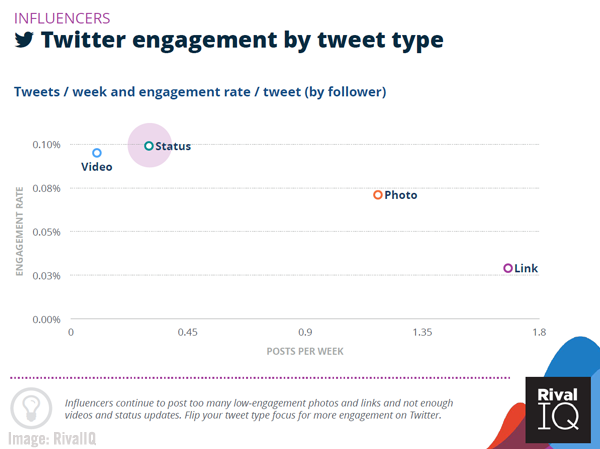Are you thinking about starting an ecommerce business?
You should.
It has been estimated that by 2021 we’ll see 2.14 billion global digital buyers.
That’s a lot of money you’re leaving on the table if you’re not delving into the world of online shopping. And it’s not something that’s changing anytime soon.
But, of course, to take your business into the ecommerce arena, you’re first going to have to develop an ecommerce website.
And it’s going to take a dedicated and skilled web designer to get your online store operational.
Or will it?
Are there options for starting an ecommerce website on your own? Or do you have to pay for an expensive team?
How much does an ecommerce website cost?
This article will give you a comprehensive answer.
We’re going to highlight the various factors that influence an ecommerce website budget, providing a detailed estimate of the cost to build each associated service.
We’re also going to go into what you should be paying for the ongoing maintenance of your site, to ensure that you’re not getting ripped off.
What Factors Influence the Price of an Ecommerce Website?
Mostly, the cost of an ecommerce website depends on your specific needs.
If you’re looking at a simple Shopify site, it shouldn’t cost more than $1,000. However, if you want to have custom ecommerce software developed, you’re looking at a long process that comes with a much higher price tag.
The cost of an ecommerce website varies based on the features you’re looking to include. The unique elements you need on your site will add up to a unique price point.
It goes without saying that your business website should fit comfortably in your budget. As is the case with any commercial venture, whether it be marketing, a website, or payroll, there needs to be room for a healthy return on investment (ROI).
When putting together your budget, where should you start?
1. Vendor Type
The first factor that will influence the cost of your ecommerce website is the vendor type.
Is your designer a development team? A freelancer? Is this an in-house designer you’ve hired full time?
Depending on the answer to that question, you can expect to pay differently based on vendor rates.
Of course, those rates are determined by the experience of the vendor, along with their location and staff. If it’s an in house team designer, remember you will have to factor their salary and benefits into the package.
2. Web Design Complexity & Size
The more complex your website is, the more expensive it’s going to be.
When we’re talking about complexity, we’re mostly focusing on things like the intricacy of the design. Also, you need to take a look at how many pages your site will be.
Along with that, how many products are you offering in your ecommerce store?
These are all things that have a direct impact on your overall website pricing.
3. Functionalities
What specialized features do you want in a website?
For example, if you want a content management system or to give users the ability to create profiles, it will have to be built into the site at an additional cost.
4. Third-Party Integration
Which, if any, third-party services do you want to be integrated into the site?
(Image Source)
Some third-party platforms, like Woocommerce themes or Shopify, can save you money upfront because they add functionality, which would be far more expensive to implement from scratch.
(Image Source)
For example, advanced Shopify features cost around $299 per month or $3,588 per year. While this is a lower upfront cost than building a website from scratch, remaining in business for the long haul will add up as you continue to pay the subscription.
Now, let’s say that you’re using that Shopify’s advanced plan. You can’t forget about the transaction fees. Shopify takes a 2.4% cut plus 30 cents from every transaction.
So, let’s say you have 8,000 transactions in a year for a grand total of $250,000. That’s an additional $8,400 gone. Add that to the $3,588 you’re paying to use the service, and you’ve got a total cost of $11,988 for the year.
And that number will go up as your ecommerce business becomes more successful.
So it might be appealing to just commit to a one-time web designer. It costs more upfront but less in the long run, right?
But then, in a few years, do you pay that same web designer to update your website once its gone out-of-date? Shopify will consistently update its platform.
In short, it’s a complicated decision. If you need a hand making it, don’t hesitate to reach out to the ecommerce experts at Higher Visibility.
5. Timeline
How quickly do you want this done? Rush projects always cost more.
There’s an old saying that you have to choose between fast, functional, and cheap, and you can only pick two.
The quicker you need your ecommerce website done, the more expensive it’s going to be.
6. Hosting
Obviously, your ecommerce site has to be hosted. And the cost of web hosting has to be factored into your budget.
When considering hosting, don’t forget to check how much you are paying for the site’s SSL certificate.
SSL stands for Secure Socket Layer. It’s a digital data file that binds an organization’s details with a cryptographic key. It’s crucial for site security, and it’s not free.
SSL certificates, like most other website features, vary in price depending on the level of service you’re looking for. A low-level ecommerce SSL certificate might cost somewhere around $17 for the entire year.
However, if you need a multilevel SSL certificate, encompassing a number of different domains, it can reach up to $170 per year in some cases.
7. Marketing and SEO
There’s no sense in creating a website that people can’t find.
For the most effective exposure, you have to build your optimization into the site from the beginning. It’s far easier to implement SEO early on than to toss it in during a website redesign.
SEO is a series of back-end changes, content tweaks, and link-building initiatives that enable you to increase your site’s visibility in search results.
So, when calculating the cost of an ecommerce website, you need to consider your promotional strategy and the costs associated with it.
8. Website Responsiveness
Your site needs to be accessible on both desktop computers and mobile devices.
That’s more important now than ever before. More than 52% of internet traffic occurs on phones and tablets, so your site has to be able to adapt.
(Image Source)
A responsive design will allow your site to recognize the device type that is accessing it and change the design accordingly.
And a bad one? Statistics show that 40% of searchers will go to a competitor after experiencing a bad mobile experience with a business’ website.
9. Client Materials
The more materials you can provide the designer, the less they have to do.
For example, if you’re writing all of your own copy and creating your own graphics, that’s something you won’t be charged for by the designer.
How Much Should You Pay for an Ecommerce Website?
It’s important to remember that there should never be a “one size fits all” price for a website.
That’s because every site is unique. One-size-fits-all offerings should raise concerns right away. The designer may be cutting some serious corners to be able to offer you that price.
The folks over at fraud.org warn that, when it comes to web design, if it seems too good to be true, then it probably is.
(Image Source)
Depending on the above factors, you can expect to pay somewhere between $10,000 and $100,000 for a custom ecommerce website. And yes, that’s a pretty wide spectrum.
It all depends on the complexity of the project.
For example, the custom development of a small website with a core feature set and responsive design should take between one and five months and cost up to $10,000.
If you’re creating an intermediate site for a medium-sized business with more features and a more complex design, you’re looking at a timetable of six to nine months. The price can often get up to $50,000.
Large enterprise-level companies with intricate multilevel website design, development, and support features will take more than nine months. They typically pay anywhere between $50,000 and more than $100,000 for massive advanced ecommerce platforms built from scratch.
Why Not Go With a Third-Party Ecommerce Website?
You can easily build a website using a third-party website builder like Squarespace or WordPress. Then you can add ecommerce plugins to those sites like WooCommerce, BigCommerce, or Shopify for a lot less than a custom site.
But, while much more expensive, custom-built ecommerce websites are preferred over third-party stores.
Why is that?
For starters, custom-built ecommerce sites create better traction with shoppers. Your company is going to look much more professional if you’re using a shopping interface that was custom designed for you.
It enhances the customer experience because the platform will be designed with your specific audience in mind.
On top of that, it gives you the ability to generate increased revenue.
A third-party ecommerce solution often takes a cut of every sale. So while there’s more of an upfront cost for a custom shopping platform, it’s more cost-effective in the long run when you’re not making Shopify payments.
(Image Source)
What Does a Minimal Custom Ecommerce Website Cost?
Basic ecommerce web design is simple but effective. It is custom made to coincide with your unique branding and designed to meet your company’s specific goals.
This is the perfect option for a startup business, providing a cost-effective venture that typically takes somewhere between three and five months.
The average cost for a website like this is somewhere in the neighborhood of $10,000. Keep in mind that this is mostly design cost as there’s not a whole lot of advanced features being offered in a tier like this.
Typically a project like this starts with a discovery stage that lasts two to four weeks.
During this time, the designer should work with you to do a market and competitor analysis to determine precisely what it is your site needs to do in order to stand out and appeal to your target demographic.
This is also the time to develop your product backlog and start figuring out what you want the user interface design to look like.
The team reviews this information together, doing a lot of the project management legwork and early planning.
The development stage comes next and takes between three and five months.
A common price point of $10,000 for five months of work boils down to about $2,000 per month.
Consider the first $2,500 or so to go toward the discovery stage. Then, you’ve got another $5,000 for the actual development of the site. Quality assurance and testing would make up the remaining $2,500.
At this time, the developer begins the front and back end development of your site. Once all of that is done, the developer moves into the testing and quality assurance portion of production, which ensures that the website will adequately serve your audience.
Then it’s time to do final checks and give your approval before you launch the site.
What Does an Intermediate Custom Ecommerce Website Cost?
An intermediate custom ecommerce website takes a more extended period and costs more than a basic site.
Typical features of an intermediate custom ecommerce site include:
- Email authorization – Users can register and login to the site
- Social authorization – Users can use their social media accounts to register
- Categories and products
- Product search
- Simple product pages
- Product reviews
- Simple cart management
- Credit Card processing
- Checkout
- Order history
- Search
- Favorites
- Analytics
These sites also tend to feature a Content Management System. A custom CMS will allow you to conduct product and order management, category management, and admin authorization/management.
How does all of that breakdown price-wise?
The UX/UI design costs usually make up around $5,000 of the final bill.
The custom development of the front and back ends of the site usually equal the bulk of the cost, reaching $30,000 in some cases.
Quality assurance comes with a price tag in the $5,000 range, while project management tops $7,500 at times.
The initial business analysis, including functional specification development and project backlog, can be more than $2,500.
That comes out to a base price of $50,000 for an intermediate site.
What Does a More Complex Ecommerce Website Cost?
We’ve taken a look at smaller and more intermediate level websites, but what about the massive enterprise-level complex sites?
Obviously, the site will cost more based on the complexity of the design. Typically these sites have a lot more product pages than either of the other two tiers and will require more than nine months to complete.
In this scenario, you’re dealing with an extra-large version of an ecommerce website. The end result is a multilevel design. It requires both development and support to function correctly.
The UX/UI for a site of this magnitude alone is going to cost in the neighborhood of $10,000.
Then, the bulk of the work goes into custom site development. For something massive, you’re looking at around $60,000 for this leg of the journey.
Quality assurance is going to take time on a site of this size, so that is going to be more than $10,000.
Project management for a project of this scale often tops $15,000.
The business analysis for an enterprise-level company involves a lot of billable hours. That’s going to wind up costing a little more than $5,000.
All of this together comes out to $100,000 as a base.
What Maintenance Will Your Ecommerce Website Need?
Once your ecommerce site launches, the work is not done.
You need to pay attention to the site after launch and maintain it for the sake of your customers. What’s new and cutting edge today is going to be outdated in just a few years.
Associated costs involved with website maintenance include:
- Website hosting. This is typically a monthly expenditure, but some hosting companies will offer a discount if you pay for the whole year upfront.
- Domain name renewal. This is an annual cost.
- Administration costs
- Marketing and advertising
- Ongoing development. That means the implementation of new features and continuous upgrades to keep the site on the cutting edge, ensuring that your competitors never pass you by.
What can you expect to pay for ongoing website maintenance?
Depending on the size of your site, monthly maintenance costs will vary significantly (between $100 and $5,000).
In Conclusion
Experts believe that in the next 20 years, ecommerce is going to account for 95% of all shopping. If you don’t have an ecommerce website yet, it’s time to get one.
(Image Source)
This article was meant to give you a rough idea of what ecommerce web design typically costs. However, it should be noted once more than no two website projects are exactly alike.
Many complex factors all collide to determine your ecommerce website pricing.
When it comes time for website development, make sure that you’re shopping around, getting quotes from various developers, and using the figures contained within this article as a basis of what you should be paying.
Beware of price gouging, but also beware of anyone offering a full custom ecommerce website at a vastly reduced rate.
Remember, if it seems too good to be true, it probably is.
The post How Much Does an Ecommerce Website Cost in 2020? appeared first on HigherVisibility.
The post
https://www.highervisibility.com/blog/ecommerce-website-cost/ appeared first on
https://www.highervisibility.com
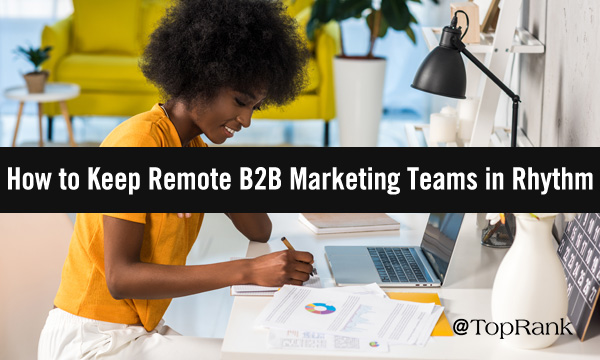
 In these unconventional times, many work teams are grappling with an unconventional dynamic: fully distributed personnel and remote collaboration. This setup presents a number of challenges, but thankfully we live in a time where technology makes it easier than ever to stay connected and tightly aligned on our work. For B2B agencies like TopRank Marketing, this has always been a point of emphasis. In servicing clients from around the globe, we’re accustomed to communicating across distances, borders, and time zones. We occasionally have our own team members work from home, and in fact, we have a few who do so full-time. While having everyone in the organization work remotely is uncharted territory for us, our built-in comfort with digital collaboration gives us a head-start, and has allowed us to hit the ground running with minimal disruption to our programs and workflows. To help other remote teams that might be trying to find the right rhythm and maximize their collective productivity, I thought I’d share a few practices and discoveries that are helping us stay close virtually, even as the circumstances of life push us apart.
In these unconventional times, many work teams are grappling with an unconventional dynamic: fully distributed personnel and remote collaboration. This setup presents a number of challenges, but thankfully we live in a time where technology makes it easier than ever to stay connected and tightly aligned on our work. For B2B agencies like TopRank Marketing, this has always been a point of emphasis. In servicing clients from around the globe, we’re accustomed to communicating across distances, borders, and time zones. We occasionally have our own team members work from home, and in fact, we have a few who do so full-time. While having everyone in the organization work remotely is uncharted territory for us, our built-in comfort with digital collaboration gives us a head-start, and has allowed us to hit the ground running with minimal disruption to our programs and workflows. To help other remote teams that might be trying to find the right rhythm and maximize their collective productivity, I thought I’d share a few practices and discoveries that are helping us stay close virtually, even as the circumstances of life push us apart.
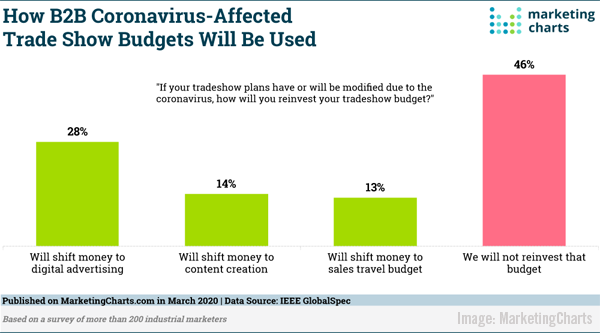
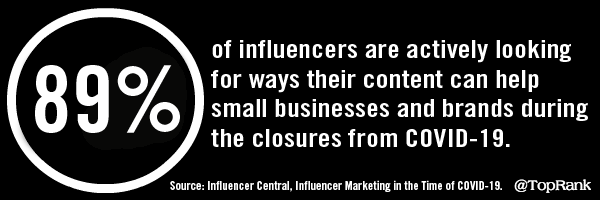 Sales And Marketing Are Misaligned As Email Lags In B2B Nurture Mix: Study While some 64 percent of marketing teams said that their organizations use account based marketing (ABM) for at least half of their marketing, 90 percent consider it challenging to successfully use it across multiple channels including sales — two of several findings of interest to digital marketers in recently-released survey data.
Sales And Marketing Are Misaligned As Email Lags In B2B Nurture Mix: Study While some 64 percent of marketing teams said that their organizations use account based marketing (ABM) for at least half of their marketing, 90 percent consider it challenging to successfully use it across multiple channels including sales — two of several findings of interest to digital marketers in recently-released survey data. 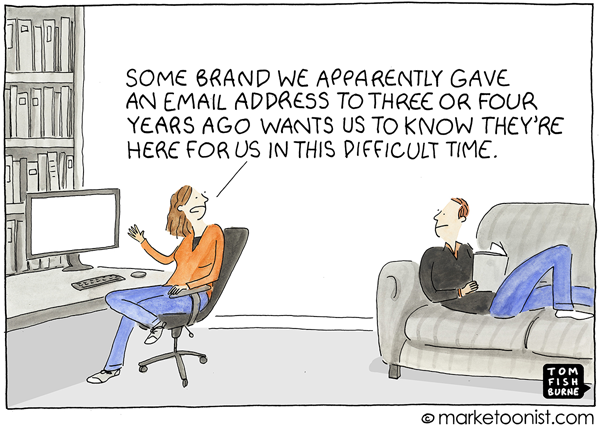 A lighthearted look at how not to communicate right now by Marketoonist Tom Fishburne —
A lighthearted look at how not to communicate right now by Marketoonist Tom Fishburne — 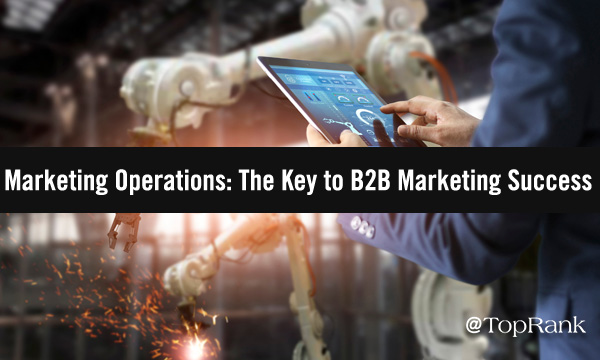
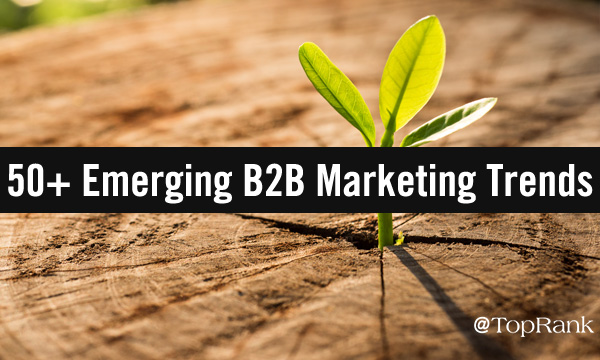
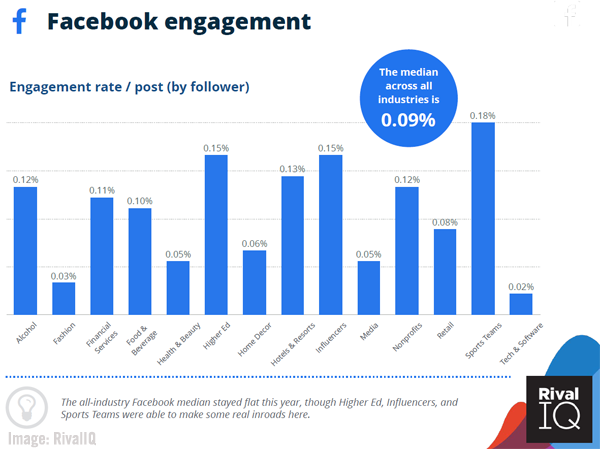 The report shows that while making social media marketing inroads on Facebook has been a challenge for brands, those using influencer marketing have fared better than those using traditional social media campaigns. B2B marketers in industries seeking to engage with younger consumers may want to start or increase their
The report shows that while making social media marketing inroads on Facebook has been a challenge for brands, those using influencer marketing have fared better than those using traditional social media campaigns. B2B marketers in industries seeking to engage with younger consumers may want to start or increase their 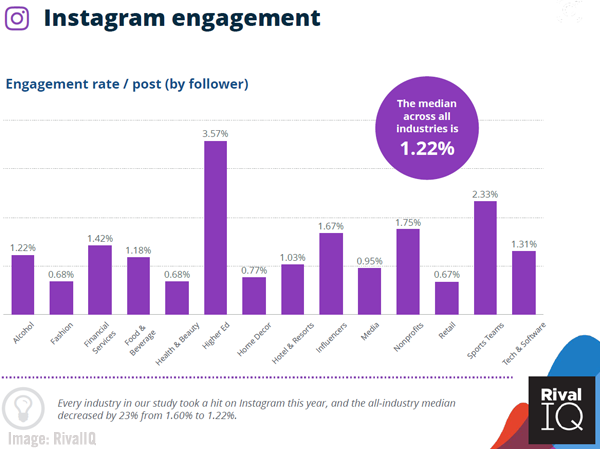 B2B marketers running campaigns on Twitter may wish to stay the course, as social media engagement on the platform stayed the same for the third year in a row.²
B2B marketers running campaigns on Twitter may wish to stay the course, as social media engagement on the platform stayed the same for the third year in a row.²
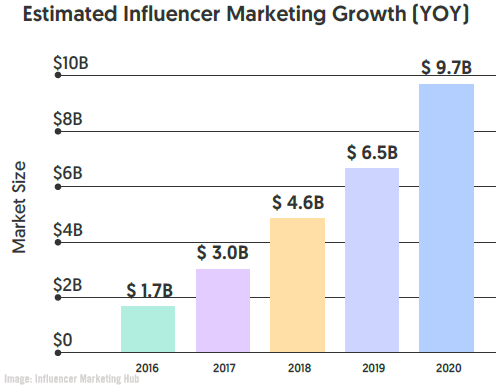 Influencer marketing has seen high advertising dollar values, a trend that continued in 2019, with average earned media value that increased to $5.78 from 2018’s level of $5.20, as shown here.³
Influencer marketing has seen high advertising dollar values, a trend that continued in 2019, with average earned media value that increased to $5.78 from 2018’s level of $5.20, as shown here.³ 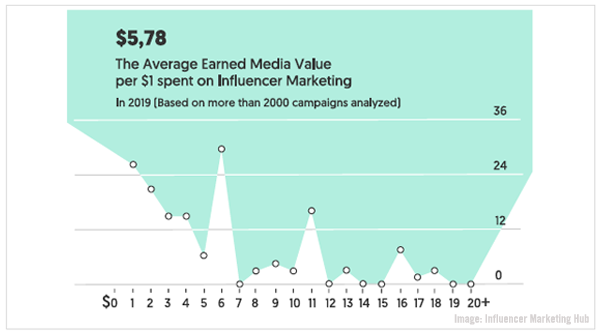 Influencer-marketing-savvy businesses have seen even higher returns, as much as $18 in earned media value for each dollar spent on influencer marketing.³ Large brands have seen a continued shift to using micro-influencers, and the most recent Influencer Marketing Hub report shows that during 2019 these firms utilized some 300 percent more micro-influencers than in 2016.³ With the strong performance seen in 2019 by influencer marketing, it should come as no surprise that 79 percent of respondents in the same report said that they plan to dedicate a budget to influencer marketing in 2020, as shown here.³
Influencer-marketing-savvy businesses have seen even higher returns, as much as $18 in earned media value for each dollar spent on influencer marketing.³ Large brands have seen a continued shift to using micro-influencers, and the most recent Influencer Marketing Hub report shows that during 2019 these firms utilized some 300 percent more micro-influencers than in 2016.³ With the strong performance seen in 2019 by influencer marketing, it should come as no surprise that 79 percent of respondents in the same report said that they plan to dedicate a budget to influencer marketing in 2020, as shown here.³  The portion of marketing budget dollars brands are spending on influencer marketing has also risen, with some 80 percent noting that they intend to spend at least 10 percent of their entire marketing budget on influencer marketing.³ Others said that they will spend nearly 40 percent of their marketing budget on influencer marketing, as outlined below.
The portion of marketing budget dollars brands are spending on influencer marketing has also risen, with some 80 percent noting that they intend to spend at least 10 percent of their entire marketing budget on influencer marketing.³ Others said that they will spend nearly 40 percent of their marketing budget on influencer marketing, as outlined below. 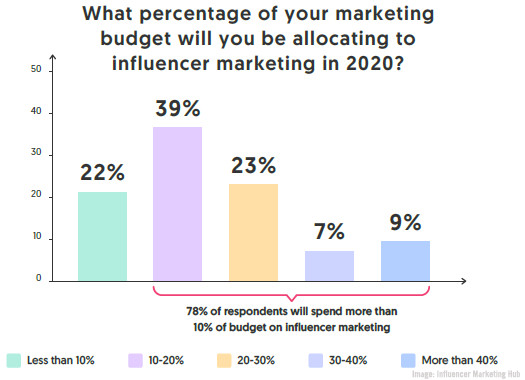 A full 91 percent of survey respondents saw influencer marketing as an effective form of marketing, with the most common gauge of influencer marketing success being conversions and sales, according to the report.³ As with social media marketing, influencer marketing has been shown to be particularly partial to Instagram, with some 87 percent using the platform.³ When it comes to B2B marketing, however, LinkedIn has remained far and away the most-used platform, as a similar 87 percent of Inc. 500 firms used LinkedIn for social media during 2019, topping a list of how the fastest-growing U.S. firms are using social media, outlined in a recent UMass Dartmouth
A full 91 percent of survey respondents saw influencer marketing as an effective form of marketing, with the most common gauge of influencer marketing success being conversions and sales, according to the report.³ As with social media marketing, influencer marketing has been shown to be particularly partial to Instagram, with some 87 percent using the platform.³ When it comes to B2B marketing, however, LinkedIn has remained far and away the most-used platform, as a similar 87 percent of Inc. 500 firms used LinkedIn for social media during 2019, topping a list of how the fastest-growing U.S. firms are using social media, outlined in a recent UMass Dartmouth 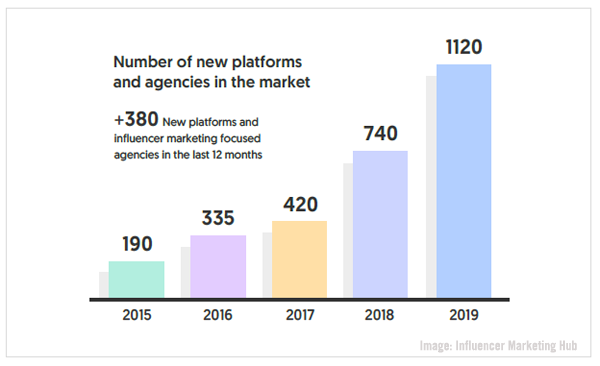 The influx of new influencer marketing platforms and agencies is a testament to the trust-building — and ultimately the success rates — of influencer marketing, yet those focused specifically on B2B influencer marketing are exceedingly rare. Luckily for B2B brands seeking top-caliber B2B marketing agencies specializing in influencer marketing, market research firm Forrester has maintained a report, and TopRank Marketing was honored to be listed as the only B2B marketing agency offering influencer marketing as a top capability in its “
The influx of new influencer marketing platforms and agencies is a testament to the trust-building — and ultimately the success rates — of influencer marketing, yet those focused specifically on B2B influencer marketing are exceedingly rare. Luckily for B2B brands seeking top-caliber B2B marketing agencies specializing in influencer marketing, market research firm Forrester has maintained a report, and TopRank Marketing was honored to be listed as the only B2B marketing agency offering influencer marketing as a top capability in its “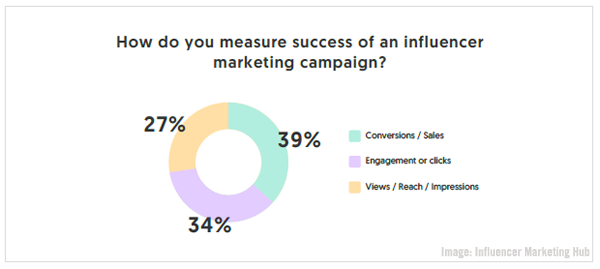 Rival IQ’s recent report data also shed some light on the success of influencer marketing, showing that as we previously mentioned in our social media observations, influencers increased their engagement rates on the often-tricky Facebook platform. A 10 percent increase in photo post engagement among influencers helped achieve the rise in Facebook engagement rate.² Influencers also achieved above-median performance on Instagram, in spite of seeing a 25 percent drop in engagement on the platform, and consistent Twitter performance as shown below.²
Rival IQ’s recent report data also shed some light on the success of influencer marketing, showing that as we previously mentioned in our social media observations, influencers increased their engagement rates on the often-tricky Facebook platform. A 10 percent increase in photo post engagement among influencers helped achieve the rise in Facebook engagement rate.² Influencers also achieved above-median performance on Instagram, in spite of seeing a 25 percent drop in engagement on the platform, and consistent Twitter performance as shown below.² 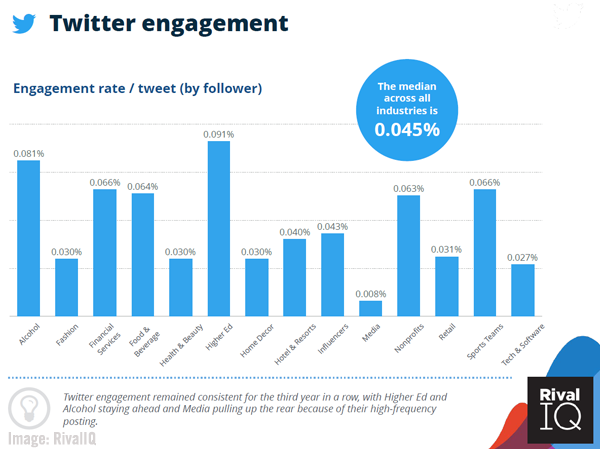 Videos and status updates were the most engaging types of tweets on Twitter among influencers according to the Rival IQ report, topping photo and link tweets, as shown here.
Videos and status updates were the most engaging types of tweets on Twitter among influencers according to the Rival IQ report, topping photo and link tweets, as shown here. 